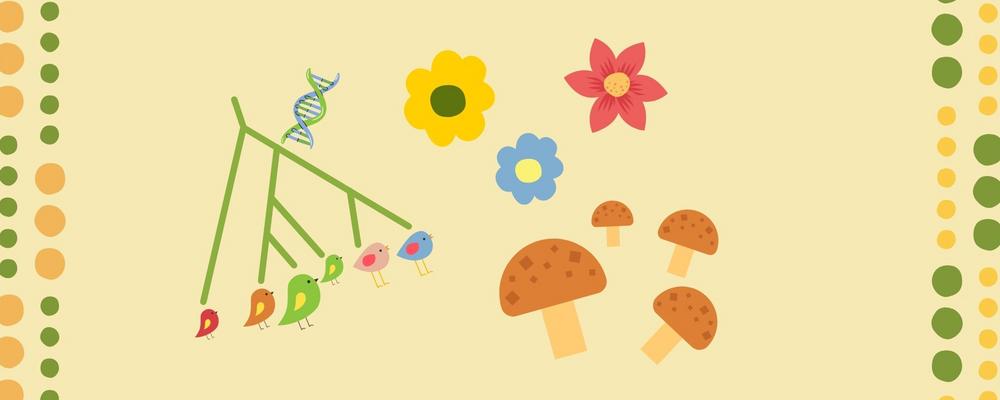
Systematics & biodiversity
Research within the main research area covers a broad spectra of organisms. Research topics include questions about relationship between species and why a certain species is found at a certain location.
Around ten senior researchers work within the field of systematics & biodiversity.
Within the group, we study the diversity in living and fossil organism. Plant taxonomy, the naming and systematization of plants, is fundamental to our research. An important part is to analyze and synthesize information derived from global biodiversity studies into a predictive classification system that reflects the history of life.
Research questions span from why diversity patterns vary among the world’s biota to detailed studies of the evolutionary relationships among closely related species to gene family evolution. New tools for metagenomics and phylogenetics are being developed by researchers in the group to aid species identification, delimitation, and automatic generation of phylogenetic trees from public databases.
At the department, we study diverse eukaryotic organisms such as birds, worms, flowering plants, fungi, and many other groups. In many cases, questions are similar regardless of the organism, and researchers collaborate closely.
Researchers (PI:s)
Alexandre Antonelli
Christine Bacon
Sören Faurby
Ellen Larsson
Henrik Nilsson
Urban Olsson
Bengt Oxelman
Claes Persson
Daniel Silvestro
Ana Tronholm
Tony Verboom
Plant systematics
Our expertise is focused on palms (mainly tropical) and campions (Sileneae, mainly temperate). We study the diversification history of plants in a phylogenetic framework. Our research investigates how diversity arises and how different biotic and abiotic factors affect diversity. In particular we use genomics combined with morphological and ecological information to address these questions.
Animal systematics
Animal systematics is the study of the evolutionary history and relationships between animal species and populations. The relationships are represented by evolutionary trees.
Terrestrial biodiversity
We study the patterns and processes that shape terrestrial biodiversity around the globe. This includes understanding what drives speciation and extinction over both small and large areas and time scales, and why some areas are more diverse than others. Using primary data from fieldwork, phylogenetics, phylogenomics, and databases amassed by both amateurs and experts worldwide, we look at the distribution of organisms in an evolutionary context. From this we can explore what has happened in the past and what we can expect in the future.
Flora of Ecuador
The Flora of Ecuador project publishes taxonomic treatments of vascular plants occurring in mainland Ecuador, based on original research.
Herbarium GB
The history of our herbarium dates back to late 18th century. At that time, the first collections formed a part of a “Naturalie Cabinet” that belonged to the Royal Society of Arts and Sciences in Gothenburg. Since 1995, the herbarium is located in the premises of the Department of Biological and Environmental Sciences, and in 2015 it became a research infrastructure at University of Gothenburg. Here preserved plants, fungi, algae etc are stored for comparative and evolutionary studies.
Gothenburg Global Biodiversity Centre (GGBC)
Gothenburg Global Biodiversity Centre aims to link science and society around biodiversity and enhance and accelerate biodiversity research through four pillars: exploration, education, research and preservation.







